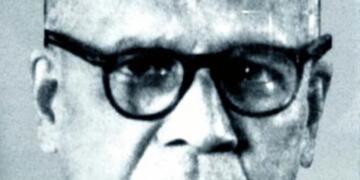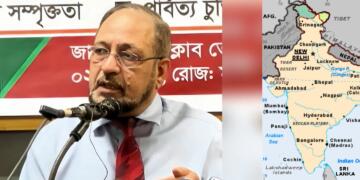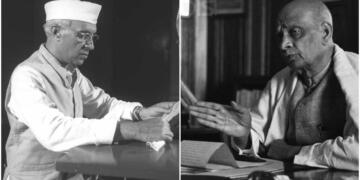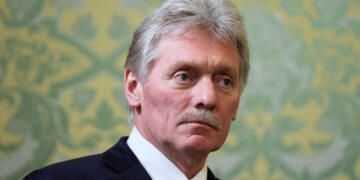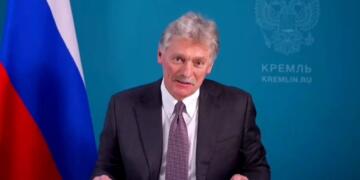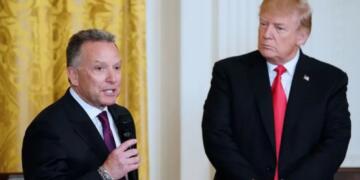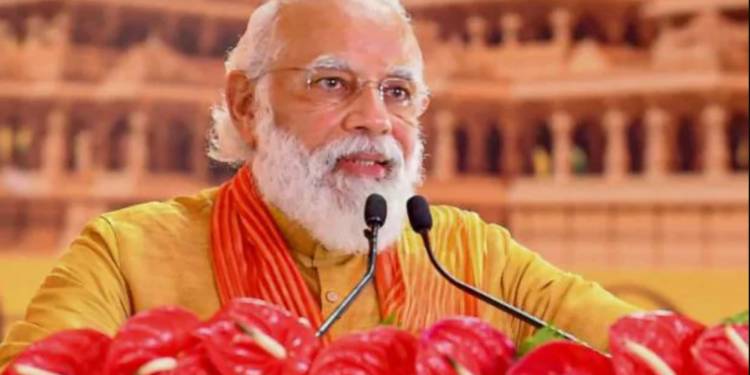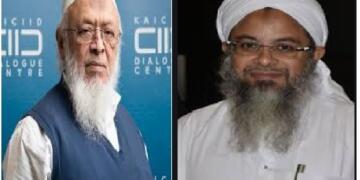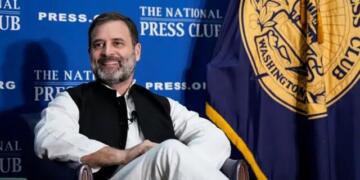Prime Minister Narendra Modi has announced himself on the world stage with the Ram Mandir ‘bhoomi pujan’ event. This grand event should not be viewed through the narrow prism of India’s Marxist-Liberal-Islamist nexus. As PM Modi invoked New Delhi’s Indic connections with Nepal, Sri Lanka, Indonesia, Iran, Cambodia, Laos, Malaysia and Thailand, not only the usual suspects but India’s civilisation rivals have got hurt too.
When speaking in Ayodhya, Prime Minister Modi represented not only the 133 crore citizens of India but also every single entity or person encircled by the Indic civilisation. Prime Minister Modi has given a voice to the Hindutva civilisation/ideology- the oldest in the world, yet kept in abeyance for the past several centuries.
New York :-) pic.twitter.com/BnExmiLiDY
— Abhijit Majumder (@abhijitmajumder) August 6, 2020
The chants of ‘Jai Shri Ram’ in Ayodhya have reverberated worldwide; even New York hasn’t remained untouched. PM Modi has no qualms about reinvigorating the Indic civilisation globally. He said, “See the magical power of Lord Ram. Buildings were destroyed. Attempts were made to destroy its existence. But Ram lives in everyone’s heart. He is the foundation of our culture.”
As the foundation of Indian culture got re-invoked, India’s soft power has started peaking to new heights. Civilisational heritage goes well beyond the boundaries and PM Modi knows that. He, therefore, seized the opportunity and emerged as the undisputed king of the Indic world which is set to take shape. For the same reason, he said that, Ramayana is popular in many countries like Indonesia, Cambodia, Laos, Malaysia, Thailand, Sri Lanka and Nepal.
Prime Minister Modi added that references to Lord Ram are also found in China and Iran, and that “Ram Katha” is popular in several other countries as well. The world always knew that the Indic civilisation existed, but no one ever tried to invoke this sentiment earlier.
Practically, the only active ideologies of the world got reduced to the binary of liberalism and Christian conservatism in the West, Communism in its various forms like Marxism, Leninism and Maoism. The Muslim world of the Gulf has, of course, become an ideological force too. But with PM Modi’s remarks, political Hindutva and its interstate connections have found a strong voice. Nepal, Sri Lanka and the Southeast Asian countries have all found an ideological fountainhead in India and PM Modi.
Hindutva had become moribund because of the Islamist invasion of the Subcontinent, followed by European colonialization for several centuries. In the post-Independence era, political Hindutva was named and shamed. While other ideologies blossomed, political Hindutva was curbed.
An indigenous ideology couldn’t grow out of the Indic world because deracination was promoted in the garb of diversity, and appeasement was encouraged in the name of tolerance. It is imperative to know that, when we talk about deracination, it is not exclusive to Ayodhya; with the Ayodhya ‘bhumipujan’, PM Modi has changed everything.
Geo-strategically, there could have not been a better opportunity to reactivate the Hindutva ideology. Today, several ideologies have grown out of distant parts of the world, all of which are challenging India’s interests. The world is getting more and more divided on ideological lines, and India cannot afford to live in an identity crisis.
The Indic ideology is up against Wahhabism from the Gulf and a desperate Pakistan, the effects of which are seen all across South and Southeast Asia in the form of terror attacks and fidayeen blasts. India is also up against the Political Islam brand of Turkey’s President Recep Tayyip Erdoğan, who glorifies the reconversion of an ancient Cathedral-turned-Mosque-turned-Museum into a Mosque, that is, Hagia Sophia.
Erdoğan also does not explain antagonising the Western and Christian world, along with Turkish expansionism. Political Hindutva also faces the onslaught of Western Liberalism- the same ideology that views legally sanctioned construction of a grand temple at Lord Ram’s birthplace as ‘controversial’.
It is also relevant to keep in mind the challenge that Western Conservatism and Christian missionaries pose to the Indic civilisation. The West-sponsored conversion industry threatens decimation of entire tribes and communities in the Indic world.
Finally, the biggest challenge comes from the culturally distant Chinese Communist Party which is rich, rogue and adventurous. It is the CCP-sponsored Maoism that threatens to engulf entire Central India by feeding on misleading narratives about Political Hindutva. Maoism has also been challenging Indic neighbours like Nepal where the entire political leadership is getting overwhelmed by an aggressive CCP.
A strong ideology needs a strong leader, and PM Modi is the tallest political leader in the entire Indic world. With his Ayodhya ‘bhumipujan’ speech, Prime Minister Modi has fired incisive arrows at China and Pakistan.
PM Modi has brought up the assertive Hindutva side of India- which no one has ever seen in recent memory. The signalling points towards India’s attempts to emerge as a civilisational power, and the message is loud and clear- India is ready for all ideological challenges that it faces from the outer world.



